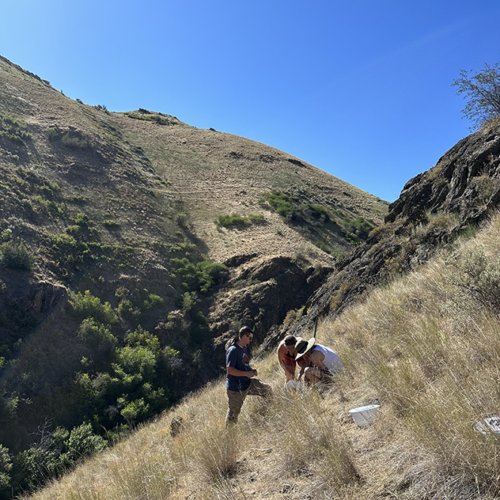
Three Grand Challenge teams received a cumulative $204,000 in funding from the Division of Research and Economic Development to to further research initiatives in resilience and sustainability. The projects will directly impact members of the Shoshone-Bannock Tribes, Treasure Valley refugees and rangelands in Idaho.
These teams are members of the Resource Nexus for Sustainability Grand Challenge, an interdisciplinary initiative that elevates societally relevant questions around finite and critical resources, sustainability and community needs. The goal of the Grand Challenge initiatives is to answer these questions through interdisciplinary research, strategic partnerships and community collaborations with regional and national institutions.
“The breadth of sustainability research being conducted under this Grand Challenge is inspiring,” said Nancy Glenn, vice president for the Division of Research and Economic Development. “More than 30 research teams submitted proposals, and each team’s dedication and contributions were invaluable in shaping the vision of this endeavor and demonstrate Boise State’s interdisciplinary partnerships and sustainability research.”
Regenerative ranching and carbon project potential in Idaho

One team, led by School of Public Service assistant professor Jared Talley, received $49,000 to begin determining the potential for carbon sequestration and regenerative ranching on public lands as a climate solution in Idaho.
Companies working to achieve carbon neutrality often do so by buying carbon credits that represent one ton of carbon dioxide removed from the atmosphere. For example, a business that is trying to achieve carbon neutrality could buy carbon credits from a farmer who practices regenerative agriculture and sequesters carbon in the ground.
This type of exchange is called a carbon project.
“The question that’s driving this research is ‘Why are there no carbon projects on western public lands?’ We have roughly 350 million acres of land that is sequestering carbon. No one’s developed carbon projects on it,” said Talley.
Ranching is the predominant use of western lands, and Talley and his team want to discover if different grazing management plans could impact how much carbon the soil can sequester, thereby potentially creating another economic opportunity for rural Idaho ranchers to contribute to their local communities while helping recover public land ecosystems.
“If we can help figure out how these communities can diversify their economies through carbon projects, or through other ecosystem service projects, then it stands to make these communities more sustainable and resilient,” Talley said. “As someone from a rural community in Idaho who cares deeply about these communities, I’m really excited that we can have Boise State leading the project.”
This research will be completed in collaboration with Bob Howard and his ranch in the Andrus Wildlife Management Area, Warm Springs Consulting, Idaho Fish and Game, Idaho Department of Lands and the United States Forest Service. Award funds will support field research opportunities for environmental studies students.